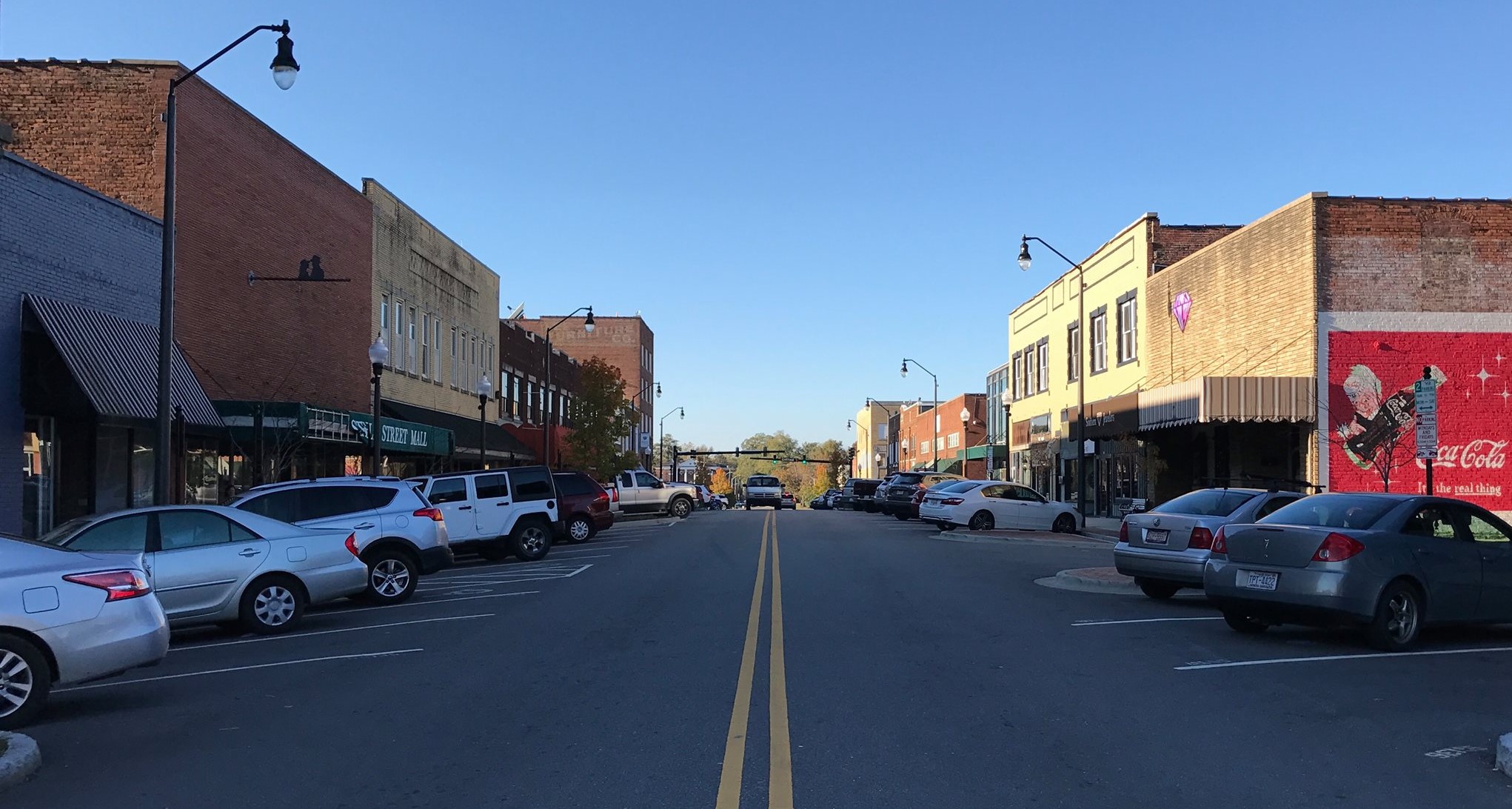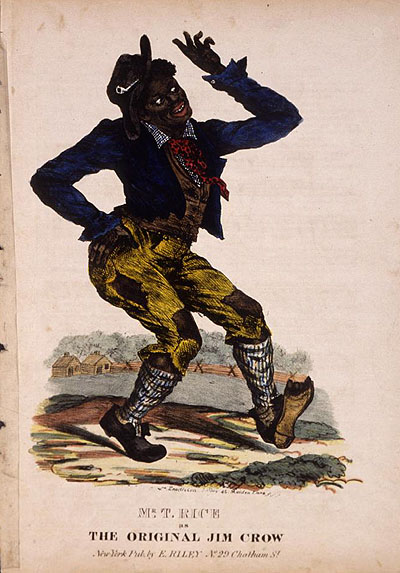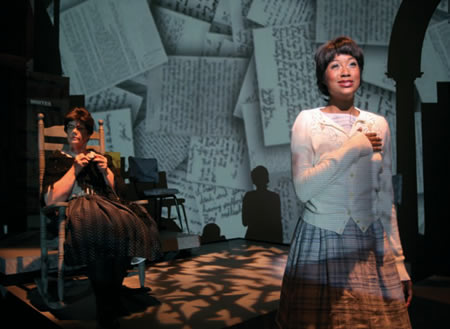|
Lee County Training School
Lee County Training School, also known as the W. B. Wicker School, is a historic school building located at Sanford, Lee County, North Carolina. It is a one-story brick building dating to 1927 with additions in 1934 and 1949. The building is characterized by large windows alternating with pilasters and was built by contactor A.L. “Link” Boykin, a leading member of Sanford’s black community. Construction funds were provided in part by the Rosenwald Fund, conceived in the 1910s by Southern black leader and educator Booker T. Washington. The Rosenwald schools were built across the south for black Americans in the early 20th century. It served as Sanford and Lee County's African American high school until it was decommissioned as a high school in 1969. Until the year 2019, classes for grade school were last held at the school in the late 1980s. It was listed on the National Register of Historic Places in 2000. The W. B. Wicker School is one of the oldest educational ins ... [...More Info...] [...Related Items...] OR: [Wikipedia] [Google] [Baidu] |
Sanford, North Carolina
Sanford is a city in Lee County, North Carolina, Lee County, North Carolina, United States. The population was 30,261 at the 2020 census. It is the county seat of Lee County. History Sanford was named for C.O. Sanford, a railroad civil engineer instrumental in the building of the rail lines through the area that formed the foundation of what became the city of Sanford. Sanford is located in Lee County, North Carolina, which was formed from parts of the surrounding three counties in 1907. On creation of the new county, Sanford and Jonesboro were the major towns in the area. Rather than decide which would be the county seat, the decision was to place the county's new courthouse directly between the two towns. For decades, Lee County was the only county in the United States to have a courthouse with an Rural Free Delivery, RFD address. In the late 20th century Sanford had grown to such an extent that it eventually merged with Jonesboro. The town of Jonesboro became Jonesboro Heights, ... [...More Info...] [...Related Items...] OR: [Wikipedia] [Google] [Baidu] |
School
A school is an educational institution designed to provide learning spaces and learning environments for the teaching of students under the direction of teachers. Most countries have systems of formal education, which is sometimes compulsory. In these systems, students progress through a series of schools. The names for these schools vary by country (discussed in the '' Regional terms'' section below) but generally include primary school for young children and secondary school for teenagers who have completed primary education. An institution where higher education is taught is commonly called a university college or university. In addition to these core schools, students in a given country may also attend schools before and after primary (elementary in the U.S.) and secondary (middle school in the U.S.) education. Kindergarten or preschool provide some schooling to very young children (typically ages 3–5). University, vocational school, college or seminary may be avail ... [...More Info...] [...Related Items...] OR: [Wikipedia] [Google] [Baidu] |
Lee County, North Carolina
Lee County is a county located in the U.S. state of North Carolina. As of the 2020 census, the population was 63,285. The county seat is Sanford. It was established on March 6, 1907, from parts of Chatham and Moore counties, and named for General Robert E. Lee, who served as the General in Chief of the Armies of the Confederate States in 1865. Lee County comprises the Sanford Micropolitan Statistical Area, which is a part of the Fayetteville Combined Statistical Area, also known as the Fayetteville area, which had a 2019 estimated population of 854,826. Lee County's motto is "Committed Today for a Better Tomorrow". Geography According to the U.S. Census Bureau, the county has a total area of , of which is land and (1.6%) is water. State and local protected areas/sites * Buckhorn Dam * White Pines Nature Preserve (part) Major water bodies * Big Governors Creek * Cape Fear River * Cypress Creek * Deep River * Juniper Creek (Cape Fear River tributary) * Lake Tra ... [...More Info...] [...Related Items...] OR: [Wikipedia] [Google] [Baidu] |
Rosenwald Fund
The Rosenwald Fund (also known as the Rosenwald Foundation, the Julius Rosenwald Fund, and the Julius Rosenwald Foundation) was established in 1917 by Julius Rosenwald and his family for "the well-being of mankind." Rosenwald became part-owner of Sears, Roebuck and Company in 1895, serving as its president from 1908 to 1922, and chairman of its board of directors until his death in 1932. History Unlike other endowed foundations, which were designed to fund themselves in perpetuity, the Rosenwald Fund was designed to expend all of its funds for philanthropic purposes before a predetermined "sunset date." It donated over $70 million to public schools, colleges and universities, museums, Jewish charities, and African American institutions before funds were completely depleted in 1948. The rural school building program for African-American children was one of the largest programs administered by the Rosenwald Fund. Over $4.4 million in matching funds stimulated construction of more ... [...More Info...] [...Related Items...] OR: [Wikipedia] [Google] [Baidu] |
Booker T
Booker T or Booker T. may refer to * Booker T. Washington (1856–1915), African American political leader at the turn of the 20th century ** List of things named after Booker T. Washington, some nicknamed "Booker T." * Booker T. Jones (born 1944), American musician and frontman of Booker T. and the M.G.'s * Booker T (wrestler) (born 1965), ring name of American professional wrestler Booker Huffman Also * Booker T. Bradshaw (1940–2003), American record producer, film and TV actor, and executive * Booker T. Laury (1914–1995), American boogie-woogie and blues pianist * Booker T. Spicely (1909–1944) victim of a racist murder in North Carolina, United States * Booker T. Whatley (1915–2005) agricultural professor at Tuskegee University * Booker T. Washington White (1909–1977), American Delta blues guitarist and singer known as Bukka White * Booker T. Boffin, pseudonym of Thomas Dolby Thomas Morgan Robertson (born 14 October 1958), known by the stage name Thomas Dol ... [...More Info...] [...Related Items...] OR: [Wikipedia] [Google] [Baidu] |
High School
A secondary school describes an institution that provides secondary education and also usually includes the building where this takes place. Some secondary schools provide both '' lower secondary education'' (ages 11 to 14) and ''upper secondary education'' (ages 14 to 18), i.e., both levels 2 and 3 of the ISCED scale, but these can also be provided in separate schools. In the US, the secondary education system has separate middle schools and high schools. In the UK, most state schools and privately-funded schools accommodate pupils between the ages of 11–16 or 11–18; some UK private schools, i.e. public schools, admit pupils between the ages of 13 and 18. Secondary schools follow on from primary schools and prepare for vocational or tertiary education. Attendance is usually compulsory for students until age 16. The organisations, buildings, and terminology are more or less unique in each country. Levels of education In the ISCED 2011 education scale levels 2 and 3 c ... [...More Info...] [...Related Items...] OR: [Wikipedia] [Google] [Baidu] |
National Register Of Historic Places
The National Register of Historic Places (NRHP) is the United States federal government's official list of districts, sites, buildings, structures and objects deemed worthy of preservation for their historical significance or "great artistic value". A property listed in the National Register, or located within a National Register Historic District, may qualify for tax incentives derived from the total value of expenses incurred in preserving the property. The passage of the National Historic Preservation Act (NHPA) in 1966 established the National Register and the process for adding properties to it. Of the more than one and a half million properties on the National Register, 95,000 are listed individually. The remainder are contributing resources within historic districts. For most of its history, the National Register has been administered by the National Park Service (NPS), an agency within the U.S. Department of the Interior. Its goals are to help property owners and inte ... [...More Info...] [...Related Items...] OR: [Wikipedia] [Google] [Baidu] |
Racial Segregation
Racial segregation is the systematic separation of people into race (human classification), racial or other Ethnicity, ethnic groups in daily life. Racial segregation can amount to the international crime of apartheid and a crimes against humanity, crime against humanity under the Statute of the International Criminal Court. Segregation can involve the wikt:spatial, spatial separation of the races, and mandatory use of different institutions, such as schools and hospitals by people of different races. Specifically, it may be applied to activities such as eating in restaurants, drinking from water fountains, using public toilets, attending schools, going to films, riding buses, renting or purchasing homes or renting hotel rooms. In addition, segregation often allows close contact between members of different racial or ethnic groups in social hierarchy, hierarchical situations, such as allowing a person of one race to work as a servant for a member of another race. Segregation i ... [...More Info...] [...Related Items...] OR: [Wikipedia] [Google] [Baidu] |
Jim Crow Laws
The Jim Crow laws were state and local laws enforcing racial segregation in the Southern United States. Other areas of the United States were affected by formal and informal policies of segregation as well, but many states outside the South had adopted laws, beginning in the late 19th century, banning discrimination in public accommodations and voting. Southern laws were enacted in the late 19th and early 20th centuries by white Southern Democrat-dominated state legislatures to disenfranchise and remove political and economic gains made by African Americans during the Reconstruction era. Jim Crow laws were enforced until 1965. In practice, Jim Crow laws mandated racial segregation in all public facilities in the states of the former Confederate States of America and in some others, beginning in the 1870s. Jim Crow laws were upheld in 1896 in the case of ''Plessy vs. Ferguson'', in which the Supreme Court laid out its "separate but equal" legal doctrine concerning faciliti ... [...More Info...] [...Related Items...] OR: [Wikipedia] [Google] [Baidu] |
Desegregation In The United States
Desegregation is the process of ending the separation of two groups, usually referring to races. Desegregation is typically measured by the index of dissimilarity, allowing researchers to determine whether desegregation efforts are having impact on the settlement patterns of various groups. This is most commonly used in reference to the United States. Desegregation was long a focus of the American civil rights movement, both before and after the Supreme Court of the United States, United States Supreme Court's decision in ''Brown v. Board of Education'', particularly desegregation of the school systems and the military (''see Military history of African Americans''). Racial integration of society was a closely related goal. US military Early history Starting with King Philip's War in the 17th century, Black and White Americans served together in an integrated environment in the Thirteen Colonies. They continued to fight alongside each other in every American war until the war of ... [...More Info...] [...Related Items...] OR: [Wikipedia] [Google] [Baidu] |
Central Carolina Community College
Central Carolina Community College is a public community college with campuses in Chatham, Harnett and Lee counties. It is part of the North Carolina Community College System. It offered its first classes in 1961. Academics Central Carolina Community College offers Associate in Arts, Associate in Science, and Associate in Applied Science degrees. Many students take their first two years of college at Central Carolina, then transfer to a four-year institution. One-year, or shorter, vocational and academic programs lead to a diploma or certificate. The college also offers non-curriculum credit courses in Adult Basic Education and other adult education courses in technical, vocational, academic, and general interest areas. The college's vocational training programs provide nurses, early childhood teachers, police officers, bioprocessing technicians, and many other essential skilled workers. In partnership with Lee County Public Schools, the college is home to Lee Early College. In the ... [...More Info...] [...Related Items...] OR: [Wikipedia] [Google] [Baidu] |
African-American History Of North Carolina
African Americans (also referred to as Black Americans and Afro-Americans) are an ethnic group consisting of Americans with partial or total ancestry from sub-Saharan Africa. The term "African American" generally denotes descendants of enslaved Africans who are from the United States. While some Black immigrants or their children may also come to identify as African-American, the majority of first generation immigrants do not, preferring to identify with their nation of origin. African Americans constitute the second largest racial group in the U.S. after White Americans, as well as the third largest ethnic group after Hispanic and Latino Americans. Most African Americans are descendants of enslaved people within the boundaries of the present United States. On average, African Americans are of West/ Central African with some European descent; some also have Native American and other ancestry. According to U.S. Census Bureau data, African immigrants generally do not self- ... [...More Info...] [...Related Items...] OR: [Wikipedia] [Google] [Baidu] |







